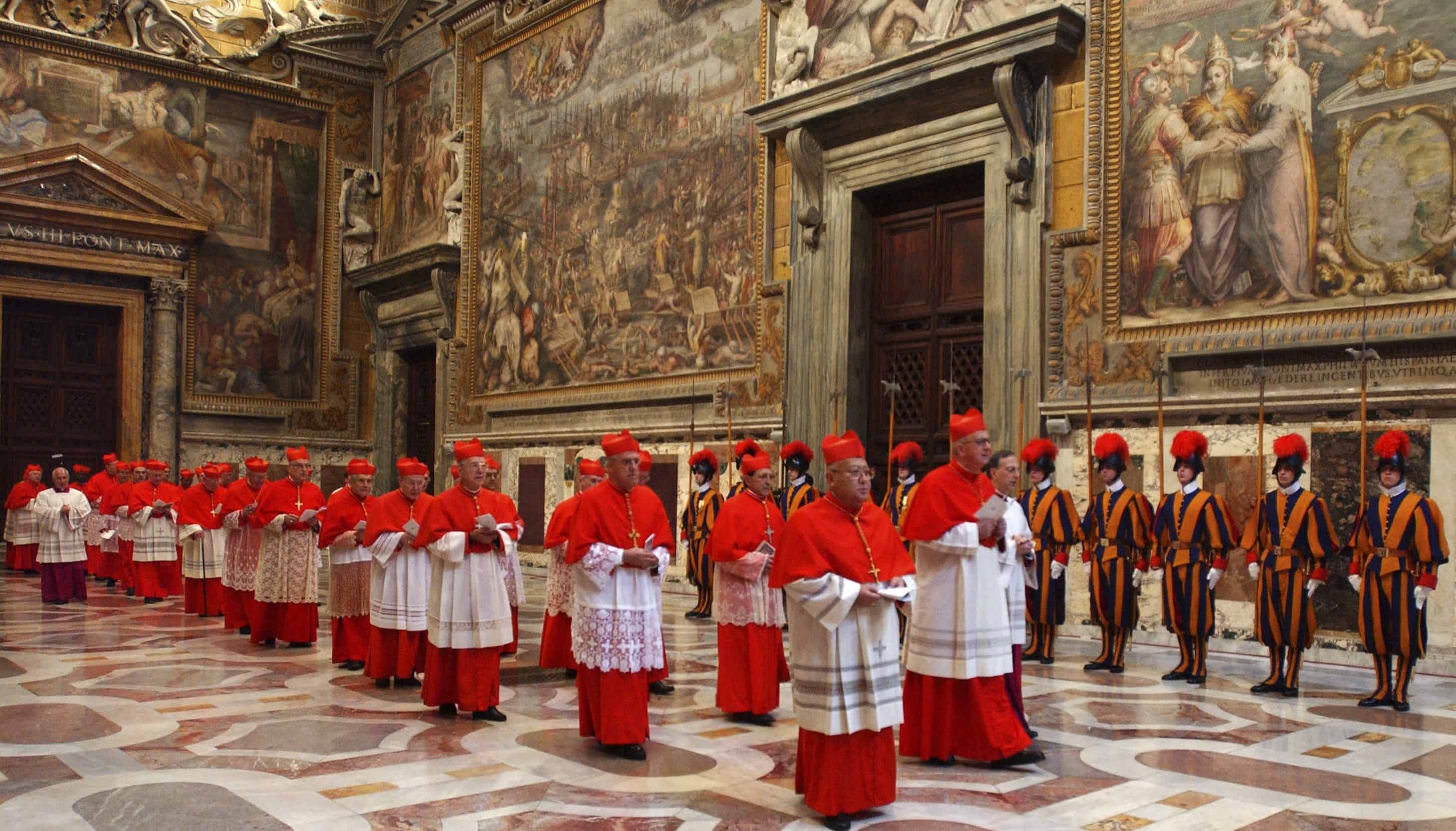
The papacy, with its rich history and global influence, holds a significant place in the world of religion and culture. From its origins in the early Christian church to its role in shaping modern-day Catholicism, the papacy has been a source of fascination and reverence for millions of people worldwide.
In this article, we will delve into 10 intriguing facts about the papacy, shedding light on its traditions, notable figures, and enduring impact on society. Whether you are a devout follower of the Catholic faith or simply curious about this esteemed institution, these facts will offer a captivating glimpse into the world of the papacy. Join us as we uncover the lesser-known aspects of the papal legacy and gain a deeper understanding of its enduring significance.
Key Takeaways:
- The Vatican City is the world’s tiniest country, but it holds immense spiritual and historical significance as the center of the Roman Catholic Church, with the Pope as its leader.
- The Pope, as the Bishop of Rome, is the highest authority in the Catholic Church and has unique traditions, such as the Papal Swiss Guard and a summer residence in Castel Gandolfo.
The Vatican City is the smallest country in the world.
Nestled within Rome, Italy, the Vatican City covers a mere 44 hectares, making it the tiniest independent state globally. Despite its size, it holds great significance as the spiritual and administrative center of the Roman Catholic Church, with the Pope serving as its sovereign leader.
The Pope is the Bishop of Rome.
As the Bishop of Rome, the Pope holds the highest position in the Catholic Church and is regarded as the spiritual leader of millions of Catholics worldwide. This title underscores the Pope's role as the head of the diocese of Rome, where St. Peter, one of the apostles of Jesus, is believed to have served as the first Bishop.
The Papal Swiss Guard is the world's smallest army.
The Papal Swiss Guard, established in 1506, is renowned for its vibrant uniforms and the duty of protecting the Pope and the Vatican. Despite its small size, this elite force is steeped in tradition and remains a symbol of the Vatican's rich history.
The Pope has a summer residence in Castel Gandolfo.
Located in the picturesque town of Castel Gandolfo, the Papal Palace serves as the traditional summer retreat for the Pope. This tranquil setting offers a serene escape from the Vatican City, allowing the Pope to relax and reflect amid the beauty of the Italian countryside.
The Sistine Chapel is renowned for its Michelangelo-painted ceiling.
Michelangelo's breathtaking frescoes adorn the ceiling of the Sistine Chapel, captivating visitors with their intricate beauty and biblical significance. This masterpiece, including the iconic "Creation of Adam," continues to inspire awe and reverence.
The Pope's official car is a customized Mercedes-Benz M-Class.
The Pope travels in style and safety in a specially designed Mercedes-Benz M-Class, featuring a bulletproof glass enclosure and custom modifications. This vehicle, often seen during papal visits and public appearances, reflects the modern amenities befitting the leader of the Catholic Church.
The Pope's official residence is the Apostolic Palace.
Situated within the Vatican City, the Apostolic Palace serves as the Pope's official residence and administrative hub. This grand complex encompasses the Papal Apartments, the Vatican Museums, and the majestic St. Peter's Basilica, underscoring its historical and cultural significance.
The Pope delivers the Urbi et Orbi blessing on special occasions.
During significant religious events, such as Christmas and Easter, the Pope imparts the Urbi et Orbi blessing, extending his prayers and good wishes to the city of Rome and the world. This solemn tradition draws countless faithful followers and serves as a unifying moment for global believers.
The Vatican Museums house an extensive collection of art and artifacts.
The Vatican Museums, comprising numerous galleries and cultural treasures, showcase the rich heritage of the Catholic Church and global artistic masterpieces. From ancient sculptures to Renaissance paintings, this renowned institution offers a captivating journey through history and creativity.
The Pope's inauguration is a momentous ceremony at St. Peter's Square.
The Pope's inauguration, marked by a majestic ceremony at St. Peter's Square, gathers throngs of devoted pilgrims and dignitaries from around the world. This historic event symbolizes the continuity of papal succession and the enduring traditions of the Catholic faith.
Directed by Oliver Stone, this iconic war film took the world by storm with its raw portrayal of the Vietnam War.
"Platoon" won four Academy Awards.
The film received critical acclaim and went on to win Best Picture, Best Director, Best Film Editing, and Best Sound Mixing at the 59th Academy Awards.
It was partially based on Oliver Stone’s own experiences in Vietnam.
Oliver Stone served in the Vietnam War, and the movie draws from his personal encounters and observations on the battleground.
Conclusion
In conclusion, the papacy has a rich and complex history, with each pope leaving a unique mark on the Catholic Church and the world at large. From their roles as spiritual leaders to their influence on global affairs, the popes have played a significant role in shaping the course of history. Understanding these 10 fascinating facts about the papacy provides a deeper appreciation for the institution and its enduring impact on society.
FAQs
What is the significance of the papacy in the Catholic Church?The papacy holds immense significance in the Catholic Church as the office of the pope is believed to be the successor of Saint Peter, who was appointed by Jesus Christ as the leader of the apostles. The pope is considered the spiritual head of the Church and plays a crucial role in guiding its doctrines and practices.
How are popes elected?The process of electing a new pope, known as a papal conclave, involves the gathering of cardinals in the Vatican to select the next pontiff. Through a series of voting rounds, a two-thirds majority is required to elect the new pope, who then becomes the leader of the Catholic Church.
If you found these papal facts intriguing, wait until you read about Vince Papale's extraordinary life, from his humble beginnings to his incredible journey in the NFL. Curious about how popes are elected? Our article on papal conclaves provides a fascinating glimpse into this secretive process. And for history buffs, the unbelievable facts about Castel Sant'Angelo will transport you back in time to one of Rome's most iconic landmarks. Keep exploring our site for more captivating stories and surprising revelations!
Was this page helpful?
Our commitment to delivering trustworthy and engaging content is at the heart of what we do. Each fact on our site is contributed by real users like you, bringing a wealth of diverse insights and information. To ensure the highest standards of accuracy and reliability, our dedicated editors meticulously review each submission. This process guarantees that the facts we share are not only fascinating but also credible. Trust in our commitment to quality and authenticity as you explore and learn with us.


